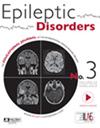Focal epilepsy can have significant negative impacts on a person's health-related quality of life (HRQoL). Although studies have been published on HRQoL in persons with focal epilepsy (PWFE), determinants of HRQoL have not been comprehensively examined. This systematic literature review (SLR) queried existing literature to identify aspects associated with HRQoL in PWFE without focus on resective epilepsy surgery, with an interest in identifying modifiable determinants for medical/nonmedical interventions.
This SLR was conducted in accordance with Preferred Reporting Items for Systematic Reviews and Meta-Analyses guidelines. Searches were conducted in PubMed and Google Scholar for articles published from January 1, 1900, to February 19, 2023, reporting on the association between HRQoL or employability and a range of demographic, psychosocial, or epilepsy-related factors and comorbidities in PWFE.
A total of 879 abstracts were identified, with 126 manuscripts reviewed and 37 studies selected for inclusion that quantified the relationship between HRQoL and the variable of interest by multivariate (N = 21) or univariate only (N = 15) methods; 10 multivariate models also included univariate data. In adjusted models, the most commonly examined determinants of HRQoL included depression (n = 15/21), number of antiseizure medications (ASMs; n = 13/21), seizure frequency (continuous seizure count, n = 11/21; seizure freedom, n = 5/21), anxiety (n = 10/21), duration of disease (n = 9/21), and cognition (n = 9/21). Depression, anxiety, and cognition were frequently seen as significant contributors to HRQoL when studied (14/15 [93%], 9/10 [90%], and 7/9 [78%], respectively). Among concepts studied less frequently, ASM severity/adverse event burden was significant each time examined (in 5/19 studies). Attainment of seizure freedom and employability was significant 75% (n = 3/4) and 72% (n = 5/7) of the time, respectively.
Poor HRQoL in PWFE can be attributed to a multitude of factors, including depression, anxiety, factors in disease management, and employability. An unmet need remains in addressing elements associated with poor HRQoL in this population.



